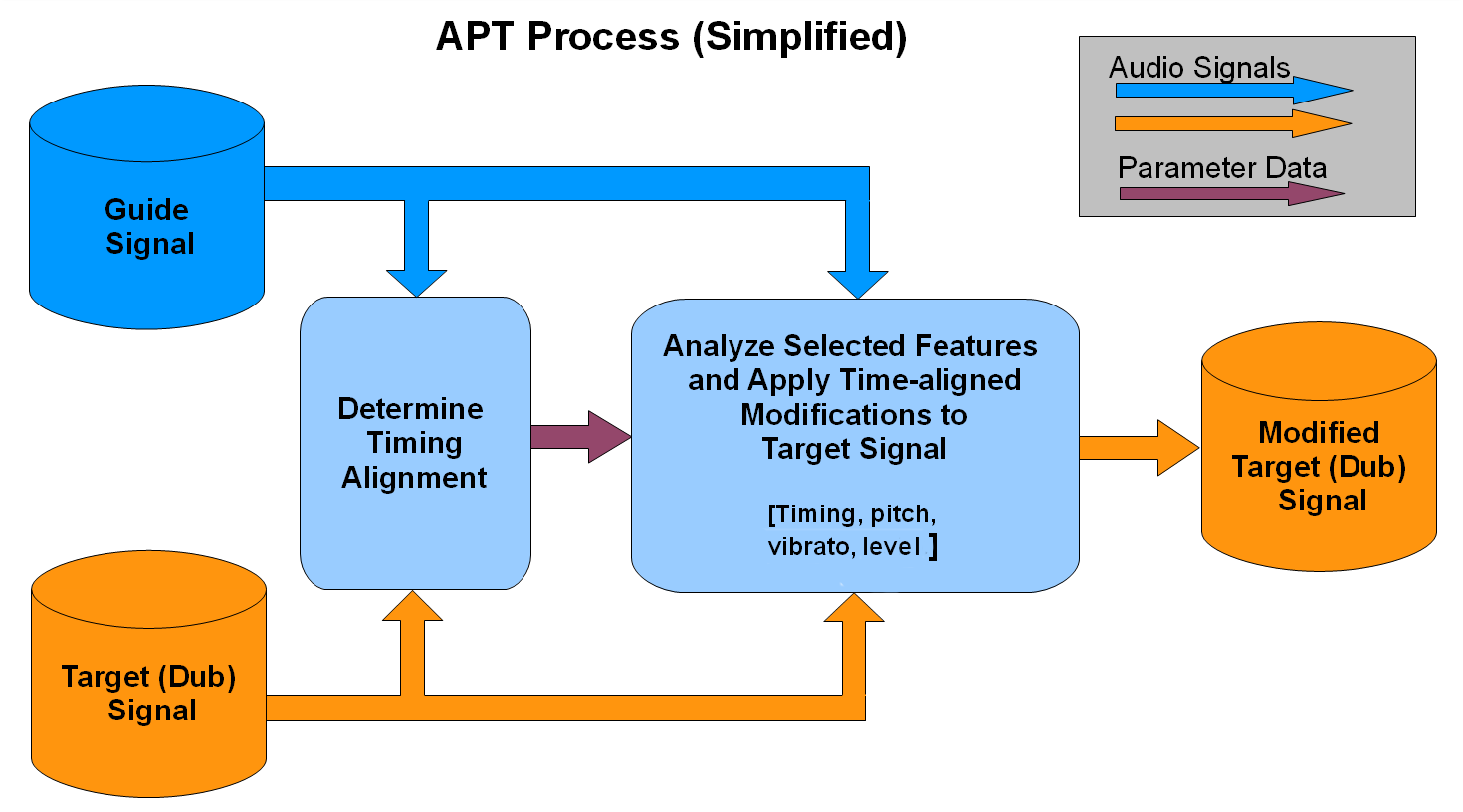Audio Performance Transfer (APT)
The Audio Performance Transfer (APT) process is one of the major unique features of Revoice Pro. It aims to transfer performance characteristics of one audio signal onto one or more other signals. It works in four basic steps.
- The APT process first determines the timing relationship between key features of a Guide and a Target (Dub) audio signal using improved Synchro Arts' VocALign® technology.

- Next, the process measures performance-related features (such as timing, pitch, vibrato and level) of both the Guide (which usually has certain preferred performance characteristics) and the Target.
- User-selected Guide performance features are transferred to the Target audio to create a new Modified Target signal with the selected Guide features.
- The transfer process usually includes the timing alignment, so Guide's features are incorporated at precisely the correct places along the Target. However, this is an option.
Features
- The "tightness" of the transferred feature can be controlled to allow natural acceptable differences to pass through unchanged.
- Optional user-inserted "Protected Regions" allow selected sections of the Target signal to be left unchanged.
- "Process-based" monitor switching, via single keys, provides instant comparison of inputs and outputs one or two signals at a time.
- The effects of any changes made to APT control panel parameters will be immediately visible (after rendering) in the displayed output graphics of pitch, level and waveform traces.
- The automatic APT processing can be followed by (or replaced by) manual editing of the output features.
- APT Pitch processing settings can be made time-varying.
- Multiple Dub signals can use the same Guide and be efficiently processed at the same time.
- SmartAlign improves alignment when silent gaps exist in long clips, only aligning where necessary.
- Manual sync point can be used to set specific times where sync should align.
Topics in this section:
APT: step-by-step introduction
Related topics:
Online video introductions or tutorials
Audio setup, monitoring and playback